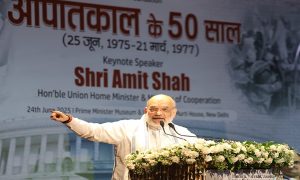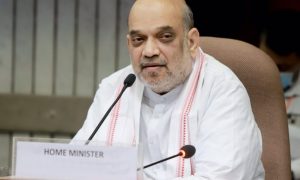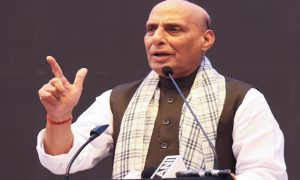Even as the districts along the north Konkan coast prepare to handle the impact of a tropical storm brewing in the Arabian Sea, researchers from Pune’s Indian Institute of Tropical Meteorology have said that Cyclone Nisarga would be the second pre-monsoon cyclone to hit the Maharashtra coast in 129 years – the first having been in May 1961.
Cyclone Nisarga was officially declared as a cyclonic storm by the India Meteorological Department (IMD), after it intensified from a deep depression on Tuesday afternoon. It is currently located 450 km south-southwest of Mumbai.
The system is expected to intensify into a cyclonic storm by Tuesday afternoon, and make landfall over Alibag in Raigad district by Wednesday afternoon, IMD said.
IITM researchers analysed cyclone landfall data for Maharashtra and the west coast, since 1891 onwards, when authorities began officially recording cyclone formations. The analysis found that for June, the developing cyclone would be the first one to hit Maharashtra since 1891 and only the second pre-monsoon (April-June) cyclone in recorded history to hit the Konkan coast.
“If we consider excluding Gujarat, then this will be the fourth cyclone to hit the west coast during pre-monsoon months, with previous instances recorded on May 1932, May 1941, and May 1961. We can also say that this is the first-ever June cyclone to hit the west coast, excluding Gujarat,” said IITM’s senior scientist Dr Roxy Mathew Koll, whose team carried out the analysis.
Experts have said that pre-monsoon cyclones have become common phenomenon in the Arabian Sea.
“As IPCC author, our report shows that future climate projections are indicating more intense cyclones growing in the Arabian Sea during the pre-monsoon and post-monsoon periods, which is very dangerous for coastal cities, especially Mumbai,” Dr Koll said.
Experts have cited the example of very severe Cyclone Vayu, which had developed last year and ended as a low pressure system over Gujarat. “We are observing the increase in pre-monsoon cyclones in Arabian Sea. While we should not draw a trend until observing such weather systems for at least a few years, the formation of Cyclone Nisarga should not be called a rare event. However, we are assessing whether these systems are intensifying faster than before due to numerous factors including rising ocean temperatures,” said Sunitha Devi, the in-charge of cyclones at IMD.
Meanwhile, there is no clarity so far if Mumbai has ever witnessed a cyclone landfall.
On Tuesday, HT had reported that a tropical cyclone, which was said to have made landfall on June 6, 1882, in the city had led to more than one lakh deaths, but it was termed as an “event that never occurred” by national and international researchers in a peer-reviewed research paper.
“The last major cyclone was Phyan, which also made a landfall over Alibaug in November 2009, leading to heavy rain and gusty winds over Mumbai. Other than that, there have been similar stray incidents during the 1940’s, but we are not aware of any cyclone making a landfall over Mumbai,” said Dr Koll.
Another IPCC author, Anjal Prakash, said that rising ocean temperatures, increase in rainfall during storms, rising sea levels and faster intensification of cyclones in the Arabian Sea can all be attributed to climate change.
“Some of the weakest cyclones at sea are being strengthened due to global warming and climate change impacts. This is no more a theory, and is being witnessed every monsoon in Arabian Sea now,” he said.




























 WhatsApp us
WhatsApp us